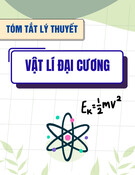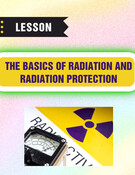JOURNAL OF SCIENCE AND TECHNOLOGY DONG NAI TECHNOLOGY UNIVERSITY
153
Special Issue
INVESTIGATING THE IMPACT OF HIGH VELOCITY OXY-FUEL SPRAYING TECHNOLOGY PARAMETERS ON THE HARDNESS OF CARBIDES MATERIAL COATING FOR INTERNAL SURFACE OF PIPES
1Dong Nai Technology University 2Lilama 2 International Technology College *Corresponding author: Hai Nguyen Tuan, nguyentuanhai@dntu.edu.vn
Hai Nguyen Tuan1*, Nam Tran Duy1, Luong Nguyen Xuan2
GENERAL INFORMATION
ABSTRACT
Received date: 30/03/2024
Revised date: 03/06/2024
Accepted date: 04/07/2024
KEYWORD
Hardness,
HVOF;
WC-12Co;
Internal surface;
Spay parameter
The hardness of high-speed oxyfuel thermal spray coatings is a major factor determining coating properties, especially when applying thick coatings for repair purposes. This study aims to optimize and determine the influence of HVOF (High velocity oxy-fuel) spraying parameters on the hardness of WC-12Co coatings applied to the internal surface of 20Cr steel pipes. The parameters investigated are spray distance (L), powder feed rate (P), and relative velocity of spray gun (V). The experimental parameters were determined by using a Taguchi L9 orthogonal design. The results showed that the optimal spraying parameters were L2 = 0.25 m, P1 = 20 g/min, and V3 = 0.2 m/s, resulting in a maximum coating hardness of 1308.6 HV. The effect of spraying parameters on hardness was observed to follow the order P (48.5%) > L (33.7%) > V (17.0%). An experimental function was developed to establish the relationships between hardness and spraying parameters, enabling the evaluation of the influence of the researched spraying parameters on hardness.
1. INTRODUCTION
Currently, pipeline systems are widely used in industries to transport gases, liquids, etc. These pipeline systems in various sectors such as chemical plants, steel industry, oil and gas, and thermal power plants often operate in harsh conditions like corrosion and wear. Protecting the inner surface of pipelines to enhance their operational lifespan has been extensively researched by many scientists and has achieved significant success (Matthews et al., 2012; Yang et al., 2008; Padture et al 2010). The common method used today to protect the surface in pipelines is industrial hard chromium or electrolytic hard chrome (EHC). Although EHC has proven effective in surface protection. However, this method poses issues such as weakness against external forces, causing coating cracks, increased pipe weight, and poor adhesion strength. High velocity oxy-fuel (HVOF) thermal spray is a technology that can replace EHC because it offers higher corrosion improving overall and wear resistance,
154
Special Issue
JOURNAL OF SCIENCE AND TECHNOLOGY DONG NAI TECHNOLOGY UNIVERSITY
2. EXPERIMENTAL PROCEDUCE
2.1 Material and spray parameters
effectiveness (Sartwell et al 1999., ; Vernhes et al., 2013). WC-12Co material is used as the spray material due to its excellent corrosion and wear resistance properties, attributed to its 88% WC composition.
In this study, WC-12Co spraying powder provided by Eutectic company was utilized. The powder particles have a shape and size ranging from 15 to 45 μm (as illustrated in Fig. 1). The coating was applied using HVOF spraying onto the internal cylindrical surface of a steel pipe made from material 20Cr with an outer diameter of 406 mm and an inner diameter of 390 mm with chemical composition as table 1. Prior to coating, the substrate surface was roughened to Ra = 10 μm. research to enhance
to
to determine influence of
Figue 1. SEM image and Analysis EDX of WC- 12Co powder
Table 1. Chemical composition of steel 20Cr
C
Si Mn Cr Ni Mo
Chemical composition
0.3
-
% Prime rate
0.18 – 0.24
0.17 - 0.37
0.5 – 0.8
0.7 – 1.0
The hardness of the coating directly affects the corrosion and wear processes in machine parts. Furthermore, the hardness of the coating is also one of the main parameters of the coating’s mechanical properties. The phase transformation in the coating formation process depends on changes in the spraying parameters, leading to changes in the coating hardness. Therefore, surface hardness in pipeline systems using HVOF spraying technology is essential. The spraying process parameters include spray distance, powder feed rate, gas pressure, combustible gas-flow ratio, spray gun displacement speed and other parameters. Many studies on the spraying process parameters have been published by many scientists (Pawlowski et al., 2008; Ilavsky et al., 2009; Karimi et al ., 2015 ; Schwetzke et al ., 2014; A.S. Taha et al., 2015; M.E. Vinayo et al., 2016). However, in most publications, the coatings are produced on the surface of flat or external surfaces of parts. For internal surface, coating formation is more restricted geometric challenging due dimensions of the sprayed components. Hence, this study identifies the effects of HVOF spraying parameters on the surface hardness in 20Cr steel pipe system (JIS G-4051., 2016) coated with WC-12Co. Taguchi L9 experimental design and ANOVA analysis are the the used parameters on the coating hardness (Konishi et al., 1987). Based on experimental results and analysis, a mathematical model between the coating hardness and spraying parameters is established to determine the optimal spray parameters and how these parameters affect the hardness of the coating.
JOURNAL OF SCIENCE AND TECHNOLOGY DONG NAI TECHNOLOGY UNIVERSITY
155
Special Issue
2.2 HVOF spray parameter 3.1 Experimental results
through similar The thermal spray process is carried out on the HVOF General Metal Alloys system - Belgium, including: MP - 2100 control panel; HP - 2700M spray gun; PF - 3350 powder feeder. The coating thickness applied is 500µm with a deviation of 10 - 50 µm. Spray parameters are set at three levels (Table 2) and arranged in a L9 orthogonal array by Taguchi (Table 3). Other spray parameters are determined studies and recommended by the manufacturer (table 4)
Table 2. Spray parameter and experimental levels table
Level of parameters
Spray parameter Symbol
1
2
3
The microhardness of coatings sprayed in this study was evaluated by carrying out indentation hardness measurements (figue 2). Perform the coating hardness measurement using the IndentaMet 1106 equipment. The hardness measurement standard is ASTM E384 - 17: 2011. Utilize the HV0.1 hardness scale with a 100g load and a 15-second dwell time. The measurement process is carried out by observing through an optical microscope. The indentation method is commonly used, where the coating hardness value is determined based on the depth and width of the obtained indentation. The coating hardness value is an average of five different measurement points across the coating thickness. The hardness results of WC-12Co coatings on the sprayed samples are listed in the table 5.
0.2 0.25 0.3
L
Spray distance (m)
Table 5. Experimental results
20
26
32
P
Powder feed rate (g/min)
n L
P V
S/N
Hardness (HV0.1)
V
0.1 0.15 0.2
Relative velocity of spray gun (m/s)
1176.3
61.41
1 0.20 20 0.10
1029.7
60.25
2 0.20 26 0.15
Table 3. Taguchi experimental design test matrix (L9) for HVOF spraying of WC-12Co powder
1150.2
61.22
3 0.20 32 0.20
Element
1247.2
61.92
4 0.25 20 0.15
Expt. no L (m) P (g/min) V (m/s)
1185.5
61.48
5 0.25 26 0.20
1 1 1 1
1200.4
61.59
6 0.25 32 0.10
1 2 2 2
1233.1
61.82
7 0.30 20 0.20
1 3 3 3
2 1 2 4
1093.6
60.78
8 0.30 26 0.10
2 2 3 5
1083.1
60.69
9 0.30 32 0.15
2 3 1 6
3 1 3 7
3 2 1 8
3 3 2 9
3 RESULTS AND DISCUSSION The results from Table 5 show that: the hardness value of the coating changes in the range of 1029.7 - 1247.2, the 4th sample with spraying parameters L2P1V2 (L = 0.25 m. P = 20 g.min-1, V = 0.15 m.s-1) has the highest with 1247.2 HV. The coating hardness is influenced
156
Special Issue
JOURNAL OF SCIENCE AND TECHNOLOGY DONG NAI TECHNOLOGY UNIVERSITY
in changes spraying
mathematical functions to identify the optimal spraying parameters and analyze their impact and trends on coating hardness. by parameters, demonstrating the suitability of their selection for this study. The study will utilize the Taguchi optimization method, ANOVA analysis, and
Table 4. Other HVOF spray parameters
Parameter Air flow (l.min-1) Oxygen pressure (MPa) Propane pressure (MPa) Propane flow (l.min-1) Air pressure (Mpa) Nitrogen pressure (Mpa) Nitrogen flow (l.min-1)
0.96 0.69 40 0.69 550 0.4 20 Value
that indicating
the coating hardness, the predicted optimal spray parameters are L2, P1, V3 (L2 = 0.25 m, P1 = 20 g/min, and V3 = 0.2 m/s) with a predicted high hardness value of 1308.59 HV. This demonstrates the high effectiveness of the proposed optimization method in the study.
Table 6. Optimal level of parameter to coating hardness
Level
L
P
V
60.96
61.72
61.26
1
61.66
60.84
60.95
2
Figue 2. SEM image of the structure and coating boundary of the sample on 20Cr substrate and hardness measurement sample
61.10
61.17
61.51
3
0.70
0.88
0.55
3.2 Identifying the optimal spray parameters
Delta
2
1
3
Rank
Prediction: S/N ratio = 62.40 Mean = 1308.59
Figue 3. Chart of impact rating of parameters L, P, V based on S/N ratio
The enhancement of coating hardness improves the mechanical properties of pipeline system during operation, especially for coatings resistant to wear, corrosion, etc. Therefore, the Signal-to-Noise ratio according to Taguchi, where a higher value indicates better characteristics (higher is better), is used for calculations based on each experimental result using Minitab software and shown in Table 6. The average impact level of each factor at different levels is also calculated based on the S/N value and illustrated on a chart (Figure 3). The optimal level for each parameter is the highest average S/N value. The lines on Figure 3 depict the varying impacts of factors affecting
JOURNAL OF SCIENCE AND TECHNOLOGY DONG NAI TECHNOLOGY UNIVERSITY
157
Special Issue
the function between 3.3 Develop a mathematical represents relationship hardness and spraying parameters.
the spraying process, varying
From function (1), the 3D graph illustrates the impact of spray parameters on the hardness of the coating layer. Figures 4a, 4c show that during the powder feed rate from 20 – 32 g/min implies a change in the spray particle density on the component surface. Under certain conditions, when the particle density supplied to the combustion chamber changes, the particles are either completely or incompletely melted. Therefore, when the particle density is too high, it affects the melting ability of the powder particles, leading to an increase in incompletely melted particles and possibly causing oxidation of the particles to increase while the hardness tends to decrease. In this study, the optimal spray rate is 20 g/min.
ANOVA analysis aims to determine the influence of parameters (L, P, V) on the hardness of the coating, variance analysis based on experimental results and S/N values shown in Table 7. The results indicate that the small error values demonstrate that the studied spray parameters are the main factors affecting the hardness of the coating and they are all statistically significant with highly reliable due to P < 0.05. The percentage of influence of factors indicates that: spray flow rate is the most significant factor affecting the hardness of the coating with 48.46%, spray distance with 33.67%, relative velocity of spray gun with 17.03%.
Table 7. ANOVA analysis results based on S/ N ratio to hardness
Element
Adj SS
Adj MS
F value
P value
Degrees of freedom
2
14378.8
7189.4
40.03 0.024
L
2
20694.4 10347.2 57.61 0.017
P
2
7274.0
3637.0
20.25 0.047
V
2
359.2
179.6
Error
8
42706.4
Total
to according
A regression equation for hardness of WC- 12Co coating with 20Cr steel pipe has been produced the Taguchi experimental. The data in Table 5 was used to build a mathematical model to learn the second order regression function of the hardness (HV) according to 3 parameters of spraying technology L, P and V.
temperature Hardness = 1064 + 16852 L - 120.0 P - 6054 V - 33347 L2 + 2,188 P2 + 21273 V2 (1)
The spray distance is one of the most important parameters affecting the quality of the coating layer, as changes in distance will alter the particle velocity (impact energy) and particle temperature (The impact status of the particle will change.). Figures 4b, 4c when the spray distance (L) increases from 0.2 to 0.25 m, the hardness tends to decrease, and it increases as L increases from 0.25 to 0.3 m, the gas transport and particles lose kinetic energy due to environmental resistance and interactions with each other, reducing particle velocity. Therefore, with the established spraying parameters, there is an optimal spray distance where the average velocity of the particles is highest. However, particle impacts also depend on particle temperature for optimal deformation of particles for coating hardness. During spraying, some particles with high velocity combined with the molten state of particles negatively affect impact and deformation. Continuing to increase the spray distance leads to decreased particle and significantly reduced melting efficiency, while sedimentation hardness increases and The values of R = 0.99; Rad = 0.97 indicate the suitability of the regression function (1).
158
Special Issue
JOURNAL OF SCIENCE AND TECHNOLOGY DONG NAI TECHNOLOGY UNIVERSITY
efficiency decreases. The best value for the range of L studied in this case is 0.25 m.
c) Effect of L-P Figue 4. Response graphs for coating hardness
4. CONCLUSION The velocity of the spray gun movement affects the interaction capability between the spray beam and the surface of piping steel within a certain period of time, whether fast or slow, is related to the density and efficiency of the spray layers on the surface of the part to form the coating. The relative movement velocity of the nozzle to the small sprayed part surface is lower because the research area has been selected, the nature of this process has less influence as it does not determine the thermal and kinetic properties of the sprayed particles like P and L. Figures 4a, 4b)
through
a) Effect of P-V
b) Effect of L-V
In this study, the Taguchi method and Anova analysis were used to investigate the influence of spray parameters on the surface hardness of WC-12Co coated steel pipes using the HVOF method. Optimizing the spray parameters the Taguchi method included spray distance, powder feed rate, and relative velocity of the spray gun. The optimal spray parameters were found to be a spray distance of L= 0.25m, a feed rate of P = 20 g/min, and a relative velocity of the spray gun at V = 0.2 m/s, resulting in the best coating hardness estimated at 1308.59 HV. The ANOVA analysis indicated that the feed rate had the most significant impact on the coating hardness at 48.46%, followed by the spray distance at 33.67%, and lastly the relative velocity of the spray gun at 17.03%, with an error margin of 0.4%. A mathematical equation was established to represent the relationship between the spray parameters to determine their influence and trends on the coating hardness. Equation (1) can be used to determine the spray parameter range for specific applications to achieve the desired hardness values.
JOURNAL OF SCIENCE AND TECHNOLOGY DONG NAI TECHNOLOGY UNIVERSITY
159
Special Issue
REFERENCES
Process. J. Therm. Spray Technol. 2012, 19, 1267–1276
Padture, N.P.; Gell, M.; Jordan, E.H. Thermal Barrier Coatings for Gas-Turbine Engine Applications. Science 2010, 296, 280– 284
A.S. Taha, F.H. Hammad, Application of the Hall‐Petch Relation to Microhardness Measurements on Al, Cu, Al‐MD 105, and Al‐Cu Alloys, Phys. Status Solidi. 119 455–462. (2015) doi.org/10.1002/pssa.2211190207. Pawlowski L (2008) The
science and engineering of thermal spray coatings. Wiley
ASTM E384 - 17: 2011 Standard Test Method for Microindentation Hardness of Materials, ASTM International, West Conshohocken, www.astm.org
Ilavsky J, Písacka J, Chraska P, Margandant N. Siegmann S, Wagner W. Barbezat G et al and- (2000) Microstructure-wear corrosion relationships for thermally sprayed metallic deposits. In: ITSC 2009. ASM International, pp 449-454
Sartwell, B.D.; Bretz, P.E. HVOF Thermal Spray Coatings Replace Hard Chrome.” Advanced Materials & Processes, Volume 156, No. 2, August 1999, pp. 25+. Gale Academic OneFile. Available online: link.gale.com/apps/doc/A55578901/AO NE?u=swinburne1&sid=googleScholar &xid=3ae83e1f
JIS G-4051 (2016) Carbon steels for machine structural use. kikakurui.com/g4/G4051- 2016-01.html
Schwetzke R, Kreye H (2014) Microstructure tungsten carbide and properties of coatings sprayed with various high- velocity oxygen fuel spray systems. J Therm Spray Technol 8(3):pp433-439
Karimi A, Verdon C, Barbezat G (2015) Microstructure and hydroabrasive wear behaviour of high velocity oxy-fuel thermally sprayed WC-Co (Cr) coatings. Surf Coat Technol pp:81-89
Taguchi G, Konishi S (1987) Taguchi Methods, orthogonal arrays and linear graphs, tools for quality American supplier institute, American Supplier Institute, Dearborn, Michigan.
the crystal
Coatings
Vernhes, L.; Azzi, M.; Klemberg-Sapieha, J.E. Alternatives for Hard Chromium Plating: for Nanostructured SevereService Valves. Mater. Chem. Phys. 2013, 140, 522–528.
M.E. Vinayo, F. Kassabji, J. Guyonnet, P. Fauchais, Plasma sprayed WC–Co coatings: Influence of spray conditions (atmospheric and low pressure plasma spraying) on structure, porosity, and hardness, J. Vac. Sci. Technol. A Vacuum, Surfaces, Film. 3 (2016) 2483–2489. doi.org/10.1116/1.572863.
Matthews, S.; James, B. Review of Thermal Spray Coating Applications in the Steel Industry: Part 1—Hardware in Steel Making to the Continuous Annealing Yang, G.-J.; Li, C.-J.; Zhang, S.-J.; Li, C.-X. High-Temperature Erosion of HVOF Sprayed Cr3C2-NiCr Coating and Mild Steel for Boiler Tubes. J. Therm. Spray Technol. 2008, 17, 782–787.

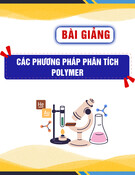
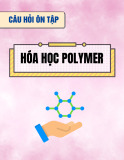

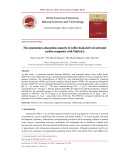
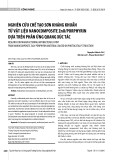
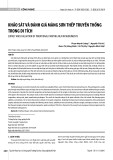
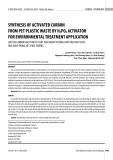
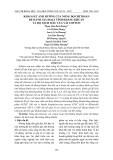

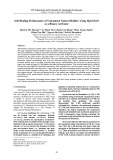
![Bài giảng Vật lý đại cương Chương 4 Học viện Kỹ thuật mật mã [Chuẩn SEO]](https://cdn.tailieu.vn/images/document/thumbnail/2025/20250925/kimphuong1001/135x160/46461758790667.jpg)




